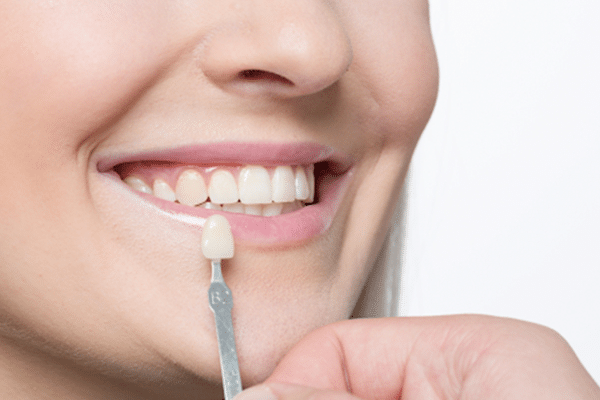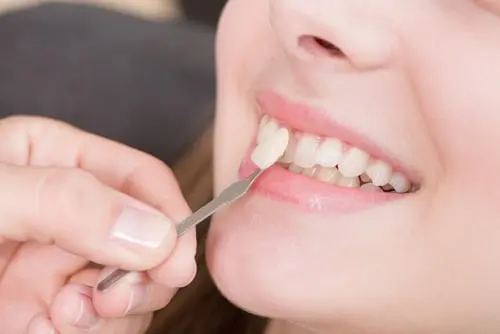With cosmetic dentistry being very common today, it’s tough to miss words like crowns, veneers and tooth-whitening in articles related to beauty, smiles and teeth.
What are veneers, though? Is there a difference between “regular veneers” and “no prep veneers”? How long do they last? Keep reading if you want to know more!
As the traditional definition suggests, a veneer is an outer covering for your tooth. Veneers are used for masking or correcting mild-to-moderate changes in tooth structure, shape and colour. However, in most cases, the dentist has to grind away 0.5 – 1.5mm from the outside and tip of the tooth in question.
Recently, however, in an effort to be more bio-friendly to the tooth and to minimise trimming of tooth structure, “no preparation” veneers have gained popularity. Are these better for you? Keeping tooth preparation to a minimum is no doubt better for the tooth. Consequently, however, the veneering material placed on the tooth can be too thin, potentially leading to unexpected chips and failures.
To put it all together…
A few advantages of no preparation veneers are,
- Minimal need to grind away tooth enamel hence less biological stress on the tooth, and less sensitivity after treatment
- Possibly easier to set up and easier to place on teeth
- Potentially lower cost
However, they come with several disadvantages too…
- May not be able to mask dark tooth-shades or deep internal stains well
- The ability to alter tooth shape may be limited
- It may chip off quickly because the overall bulk of the veneering material being placed is less
As with any complex treatment, a good place to start would be a thorough dental check-up & smile assessment with an experienced dentist. Assuming your gums and teeth are healthy, the smile assessment (which usually includes photographs and video) will allow your dentist to assess the best options to meet your cosmetic goals.
As dental healthcare professionals, our goal is to not only keep your smile healthy but sparkling too.




